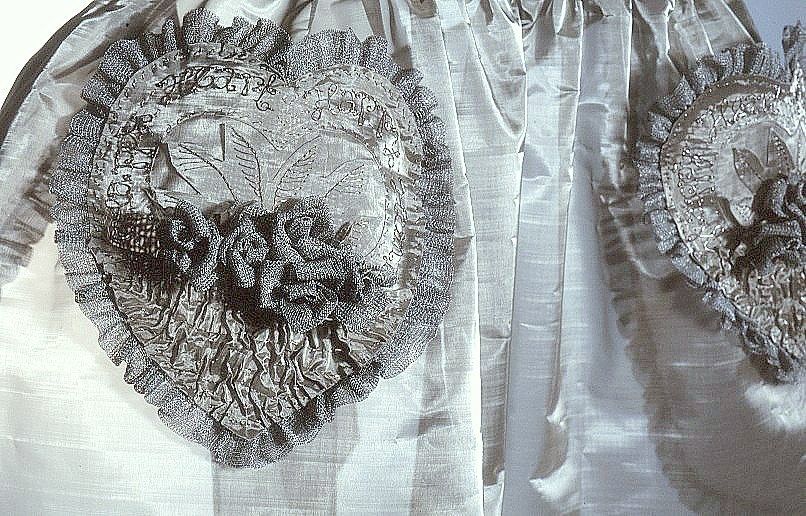The apron has long been the uniform of the housewife/mother. A shield that serves to protect and commemorate the experience and activities of the everyday.
By definition, armour serves as both an offensive and defensive device. A steel apron, “domestic armour”, should therefore not only protect the wearer from the duress of the office but also act as political agent, questioning the stereotype of the office itself.
Throughout the making of the work, the aprons increasingly developed as an interface between the housewife/mother and the occupying forces (the family) - the aprons becoming as much a layered construction of domestic memory as symbolic of the mothering role.
The stainless steel paradoxically defies its initial reading of strength and resilience. Redefined as cloth, it is now vulnerable to every impact and serves as witness to wear and tear. The iconographic embroidery heralds life experience, a catechism of lessons learnt.
Happy heart, happy home 2001
Stainless steel wire and mesh
50 cm(H) x 75cm(W) x 25 cm(D)
Photo credit; I Hobbs
Happy heart, happy home (detail) 2001
Stainless steel wire and mesh
50 cm(H) x 75cm(W) x 25 cm(D)
Photo credit; I Hobbs
There's no place like home 2001
Stainless steel wire and mesh
50 cm(H) x 80 cm(W) x 40 cm(D)
Photo credit; I Hobbs
There's no place like home (detail) 2001
Stainless steel wire and mesh
50 cm(H) x 80 cm(W) x 40 cm(D)
Photo credit; I Hobbs





